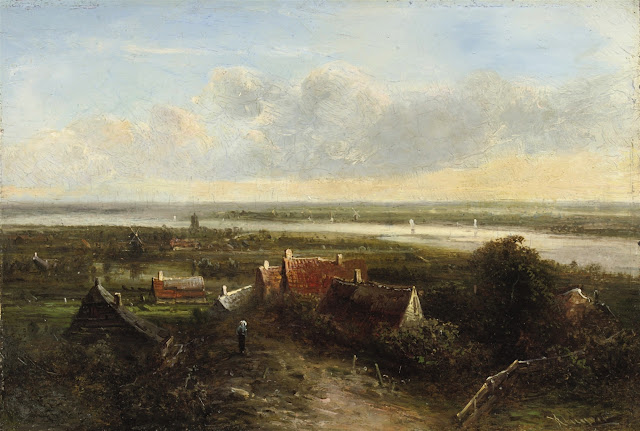The Dutch landscape painter, Pieter Lodewijk Francisco Kluyver (1817-1900),
was a specialist in panoramic landscapes working in the area around Arnhem,
Amersfoort, The Hague and Amsterdam. In terms of style and composition and his
search for technical perfection, Kluyver's work is very much a continuation of
the 17th century Northern Netherlandish tradition of landscape painting as
exemplified, among others, by Jacob Ruysdael and Philips Koninck.
The
painting shown here is of particular interest given its daring use of colour
perspective, Kluyver's use of light and the impressive clouded sky. The artist
has enriched the foreground with figures which stylishly lead the viewer's gaze
in the direction of the plain stretching out towards the horizon. This painting
is a 'pièce de conversation' in the true sense of the word: it illustrates the
artistic dialogue between the realists of the 17th century and their 19th
century successors with a nicety that is rarely encountered. While the 17th
century painters worked from memory, their 19th century admirers extended their
painterly language through the fruits of the great 19th century advance of
observation.












.jpg)


No comments:
Post a Comment